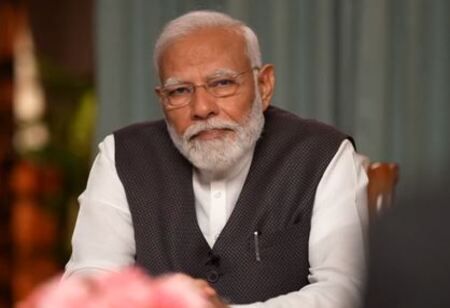
Modi's Tax Overhaul Strains Finances but Boosts Image in Trade Tensions


Prime Minister Narendra Modi's most significant tax reductions in the past eight years are expected to put pressure on government finances, but they are receiving accolades from businesses and analysts who believe they will enhance his reputation amid an ongoing trade dispute with the US.
In the most extensive tax reform since 2017, Modi's administration unveiled major revisions to the complicated goods and services tax (GST) system, aimed at making everyday items and electronics more affordable starting in October, benefiting both consumers and companies like Nestle, Samsung, and LG Electronics.
Simultaneously, during his Independence Day address, Modi encouraged Indians to purchase more domestically produced goods, reflecting the sentiments of many supporters who advocate for boycotting US products following Donald Trump's increase of tariffs on imports from India to 50 percent effective August 27.
The tax reduction initiative comes with implications, as GST serves as a crucial source of income. IDFC First Bank predicts these cuts will increase India's GDP by 0.6 percentage points over the next year but will result in a $20 billion annual loss for both state and central governments.
Also Read: Brands Empowering and Prioritizing the Ethical Handloom and Artisans
However, this move is likely to enhance weak sentiment in the stock market and provide political gains for Modi in light of an important state election in Bihar, according to Rasheed Kidwai, a scholar at the New Delhi-based Observer Research Foundation.
India introduced its significant tax system in 2017, which consolidated various local state taxes into a single, nationwide GST, marking the first time the economy was unified in this manner.
Also Read: Inimitable Indian Traditional Art and Handicrafts Increasing Global Demand
Yet, the landmark tax reform since India's independence has faced criticism due to its intricate structure, which imposes taxes on goods and services at four different rates: five percent, 12 percent, 18 percent, and 28 percent.
Last year, India announced that caramel popcorn would be taxed at 18 percent, while salted popcorn would fall under the five percent category, leading to discontent about this clear example of the complexities of GST.
With the updated system, India plans to eliminate the 28 percent tax bracket, which covers cars and electronics, and transfer almost all items from the 12 percent category to the reduced five percent rate, thus benefiting a broader range of consumer products and packaged foods.
Government figures indicate that the combination of the 28 percent and 12 percent tax brackets contributes to 16 percent of India's total GST revenue, which was around $250 billion in the last fiscal year.